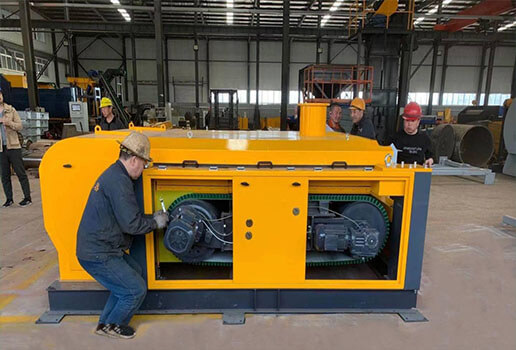
Recycling plants around the world rely on Eddy Current Separators to separate and recover non-ferrous metals. The technology utilises high strength magnetic forces to repel and eject non-ferrous metals in many different forms including aluminium beverage cans, car frag, and foils.
The large UK-based metal recycler, the Bird Group, developed the world’s first Eddy Current Separator in 1981. The significance of the development resulted in the Bird Group receiving the Prince of Wales’ Award for Technology and Innovation and the Tomorrow’s World Award to Technological Development and Innovation. The technology would change the landscape of metal recycling, enabling easier and more efficient recovery and separation of valuable non-ferrous metals such as aluminium and copper. In the following decade, Eddy Current Separator technology evolved with many different suppliers offering their own designs with varying separation abilities.
Successfully separating non-ferrous metals with an Eddy Current Separator depends on a number of critical criteria. In this technical review, we assess five key design characteristics with the aim of dispelling some myths about the Eddy Current Separator. These include:
The rotational speed of the magnetic rotor;
The speed of the feed belt;
The length of the feed belt;
The necessity of pre-removing ferrous metal;
The relative magnetic strength of the rotor.
An Eddy Current Separator consists of a magnetic rotor with alternating magnetic poles (north/south) rotating inside a slower rotating non-metallic shell. A rubber feed belt, rotating at the same speed as the non-metallic shell, conveys material into the rapidly rotating magnetic field generated by the rotor where non-ferrous-metals become induced by magnetically-driven eddy currents. The eddy currents generate an electric current in the non-ferrous metal particle, which then produces its own magnetic field. This magnetic field reacts with the magnetic field of the rotor, resulting in a repulsive effect that enables the displacement and, therefore, separation of the non-ferrous metal.
This separation is in accordance with two laws:
Faraday’s Law of induction, where electrical currents are induced when conductors enter a rotating magnetic field (e.g. non-ferrous metals such as aluminium);
Lenz’s Law, where the induced eddy currents create a magnetic field that opposes the magnetic field that created it. This results in the repulsion of a conductor away from the magnetic source;
In theory, an increase in the number of polarity changes per second would have a positive effect on the separation efficiency (i.e. more flux change generating a greater reactive magnetic field in the non-ferrous metal). However, investigative tests show that as the rotor speed increases (thus increasing the rate of change of polarity) the actual displacement or thrown distance of a non-ferrous metal particle reaches a peak. After reaching a peak, the displacement of the non-ferrous metal particle displacement is sustained or indeed falls, significantly for some smaller particles.
Investigations into the relationship between the magnetic rotor speed and the throw distance of a non-ferrous metal particle identified that the amount of repulsive energy induced into a non-ferrous metal particle is proportional to the dwell time in the field. If this dwell time is too short, then there is less induced energy and, therefore, a reduction in the displacement or throw of non-ferrous metal particle.